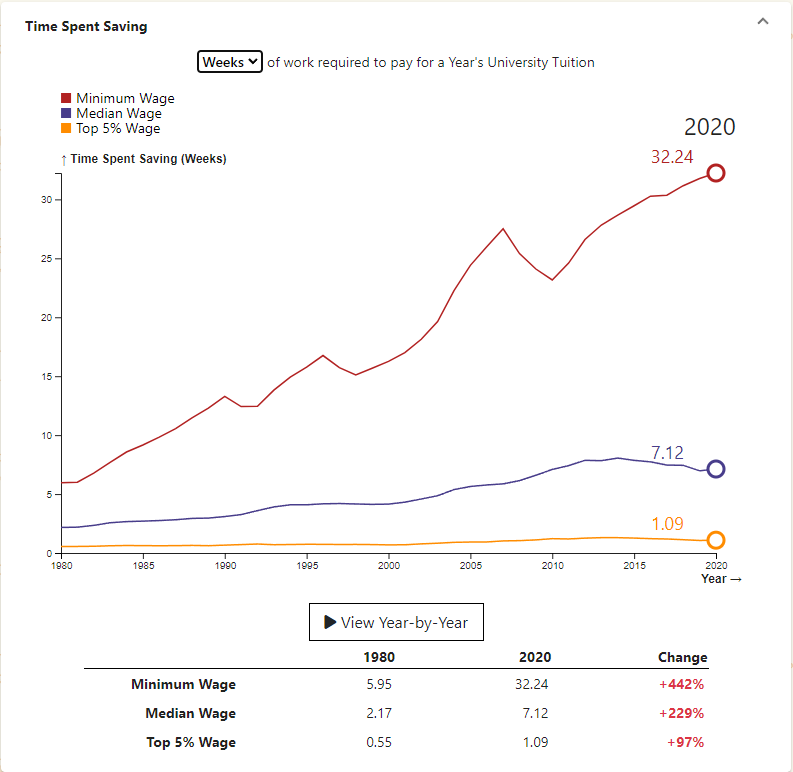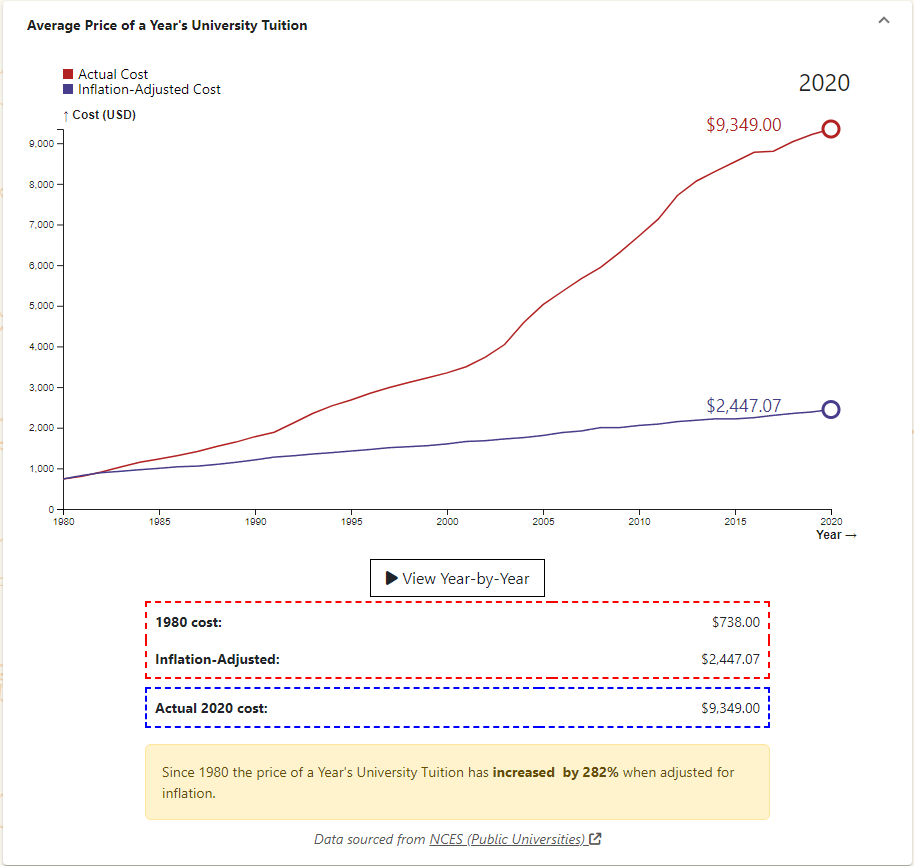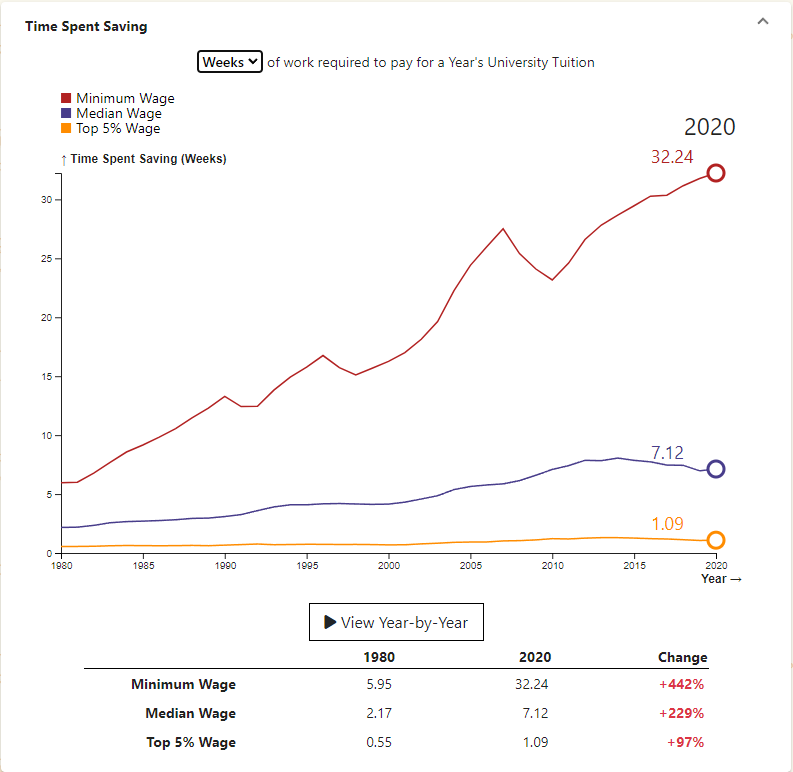The minimum wage was raised in 2007, 2008, and 2009 to its present value of $7.25, so the amount of minimum wage required to save for tuition dropped at that time.
I added the wage data for each bracket to the OP for reference. I did have an error where I was dividing the Median and Top 5% annual wages by 40 instead of 52 to get the weekly wage. I fixed that and updated the OP. The average wage for the Top 5% in 2020 is $447,570 annually or $8,607 weekly, so for $16k tuition it would take 1.86 weeks of saving for a Top 5% earner. However the average tuition is $9349, so it would only take 1.09 weeks for a Top 5% earner to save that much.
It would be interesting to have a more region-specific breakdown of this information, especially since the U.S. is so big and costs (and minimum wages) vary widely from place to place. I haven't been able to find more granular data, though.
Hahaha, fair enough. I threw some axis labels on there.




It's definitely not a good trend ☹️